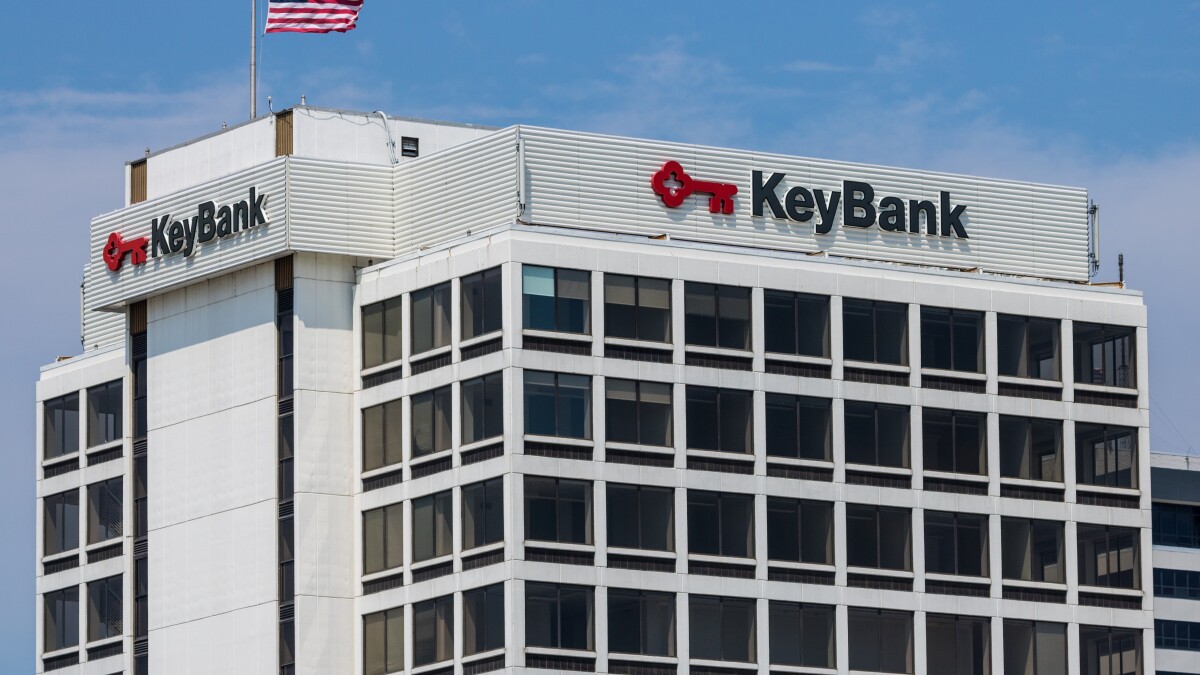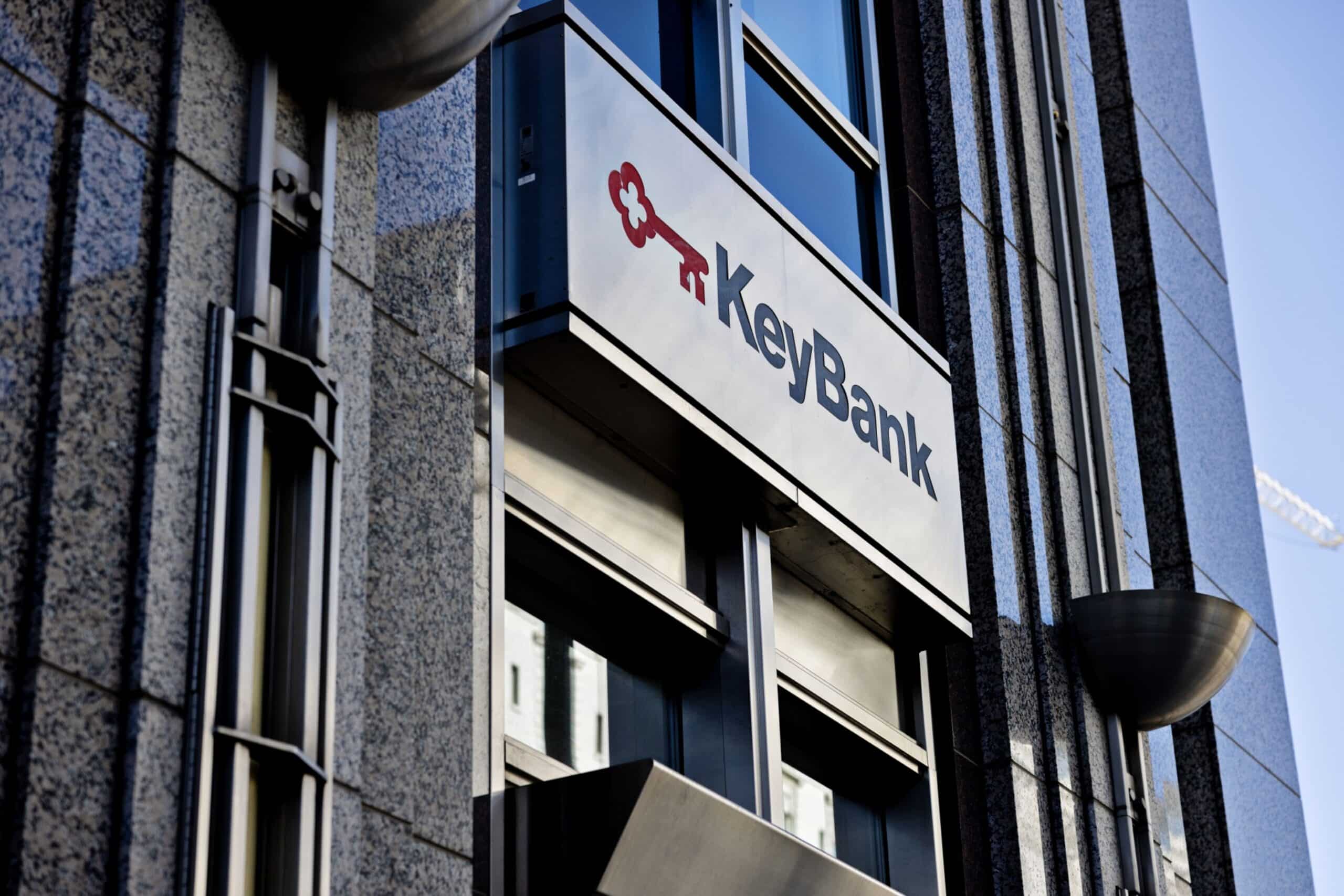
With the announcement that KeyBank, a $185 billion U. S. banking giant, will now allow its 3.5 million clients to buy and hold Bitcoin and other cryptocurrencies directly, the American banking landscape is experiencing a tectonic shift. This move is not just another incremental step in crypto adoption but a bold signal that traditional finance is waking up to the digital asset revolution. For investors and banks alike, KeyBank’s crypto integration is more than a headline – it’s a redefinition of what mainstream banking can offer in 2025.
KeyBank’s Crypto Integration: A Game-Changer for Mainstream Banking
Announced in July 2025, KeyBank’s new service enables customers to buy, store, and trade Bitcoin directly within their bank accounts. Rather than pushing users toward external crypto exchanges or fintech apps, KeyBank has partnered with licensed third-party firms to offer seamless Bitcoin custody and trading while ensuring compliance with federal regulations. This positions KeyBank as one of the largest U. S. banks to fully embrace digital assets within its core offerings.
The implications are profound. For years, U. S. banks have watched from the sidelines as fintech startups and overseas competitors drew millions into digital assets. Now, with regulatory clarity improving – especially after the March 2025 Office of the Comptroller of the Currency (OCC) guidance allowing national banks to engage in crypto custody and stablecoin activities without prior approval – the competitive calculus has changed dramatically.
At the time of writing, KeyCorp (KEY) trades at $18.81, reflecting market optimism about its digital pivot (source). By integrating crypto services into its legacy platform, KeyBank isn’t just responding to customer demand – it’s fundamentally reshaping how Americans interact with both traditional and digital finance.
The Broader Trend: US Banks Move Toward Bitcoin Integration
KeyBank isn’t alone in this evolution. The past year has seen an accelerating trend of major U. S. banks moving toward Bitcoin adoption:
- U. S. Bancorp resumed its institutional Bitcoin custody service in September 2025 and now supports Bitcoin ETFs (source).
- Morgan Stanley announced plans for cryptocurrency trading on its E*Trade platform via Zerohash partnership (launching first half of 2026), signaling that Wall Street heavyweights no longer see crypto as niche (source).
This momentum is reinforced by broader regulatory support and an increasing recognition that embedded banking could represent an addressable market share of up to $500 billion by 2030 (according to KeyBank executive Gavrity). The convergence of banking infrastructure and digital assets is not a future scenario but an unfolding reality.
Why Crypto Banking Matters for Investors Now
The impact on investors – especially those interested in Bitcoin – cannot be overstated:
- Enhanced Security: Bank-grade custody reduces risks associated with unregulated exchanges or self-custody mishaps.
- Simplicity and Convenience: Managing both fiat and digital assets through one trusted institution streamlines financial life for millions.
- Mainstream Legitimacy: When established banks like KeyBank offer direct Bitcoin access, it signals institutional confidence that may draw even more conservative investors into the fold.
This shift also brings new considerations: potential custodial fees, evolving regulatory obligations for reporting crypto holdings, and ongoing exposure to volatility inherent in all cryptocurrencies. However, these are familiar terrain for seasoned investors accustomed to balancing risk across asset classes.
KeyCorp (KEY) Stock Price Prediction (2026-2031)
Professional outlook following KeyBank’s crypto integration and evolving U.S. banking landscape
| Year | Minimum Price | Average Price | Maximum Price | YoY % Change (Avg) | Market Scenario Insights |
|---|---|---|---|---|---|
| 2026 | $17.40 | $19.60 | $22.10 | +4.2% | Initial volatility as crypto services scale; regulatory clarity supports moderate growth |
| 2027 | $18.10 | $21.20 | $24.30 | +8.2% | Increased adoption of crypto services; higher fee income and cross-selling opportunities |
| 2028 | $19.00 | $22.80 | $26.50 | +7.5% | Continued digital asset integration; improved earnings from fintech partnerships |
| 2029 | $19.80 | $24.40 | $28.70 | +7.0% | Matured crypto offering; stablecoin products boost transactional revenue |
| 2030 | $20.50 | $26.10 | $30.90 | +7.0% | Embedded banking market expands; KeyBank captures greater share of digital-first clients |
| 2031 | $21.30 | $27.90 | $33.20 | +6.9% | Sustained growth from digital assets; macroeconomic conditions and fintech alliances drive valuation |
Price Prediction Summary
KeyCorp (KEY) is positioned for progressive growth through 2031, leveraging its early adoption of crypto services and broader banking digitization trends. The stock is expected to see steady appreciation, with average prices rising from $19.60 in 2026 to $27.90 by 2031. Minimum price forecasts factor in potential market corrections or regulatory headwinds, while maximum scenarios reflect bullish adoption and successful monetization of digital asset offerings.
Key Factors Affecting KeyCorp Stock Price
- Successful rollout and client uptake of Bitcoin and crypto services
- Favorable U.S. regulatory environment for banks engaging with digital assets
- Expansion of embedded banking and fintech partnerships
- Growth in fee-based income from crypto custody, trading, and stablecoin services
- General economic conditions and interest rate environment
- Competitive pressures from other banks and fintechs entering the crypto space
- Potential volatility or setbacks in the broader cryptocurrency market
Disclaimer: Stock price predictions are speculative and based on current market analysis.
Actual prices may vary significantly due to market volatility, economic conditions, and other factors.
Always do your own research before making investment decisions.
The New Normal: Crypto Adoption Among America’s Biggest Banks
A remarkable statistic underscores this inflection point: Half of America’s largest banks are now developing or actively offering some form of Bitcoin service. What was once considered fringe is rapidly becoming table stakes for financial institutions seeking relevance among younger demographics and tech-forward clients (source). With each new entrant like KeyBank joining the ranks of “crypto-friendly” institutions, competitive pressure mounts on laggard banks still hesitant about digital assets.
For consumers, this acceleration means more choice and better integration between traditional and digital assets. No longer must investors shuttle funds between banks, exchanges, and wallets. Instead, they can access crypto markets with the same login credentials and security protocols they use for checking accounts or mortgages. This seamlessness is likely to drive further adoption, especially among clients who were previously wary of crypto’s technical hurdles or security risks.

Yet, the implications extend beyond retail investors. Institutional clients, pension funds, endowments, and family offices, have long sought secure, regulated channels for digital asset exposure. KeyBank’s move provides a blueprint for other regional and national banks to follow suit. As more institutions build out their crypto infrastructure, expect to see a virtuous cycle: increased liquidity, better price discovery, and ultimately less volatility as new capital flows in.
Stablecoins: The Next Frontier
While Bitcoin grabs headlines, KeyBank’s leadership has also signaled enthusiasm for stablecoins. In a recent interview with CNBC Television, KeyCorp’s CEO described stablecoins as holding “a lot of promise”: not just as speculative vehicles but as foundational tools for programmable payments and faster settlements. This forward-looking approach suggests that future banking products could include not only direct crypto trading but also blockchain-based payment rails that reduce costs for both consumers and businesses.
This is particularly relevant given ongoing legislative efforts to regulate payment stablecoins in the United States (source). As regulatory frameworks mature further in 2026 and beyond, expect U. S. banks to roll out more sophisticated products blending the best of fiat stability with blockchain efficiency.
What Investors Should Watch Next
Top 5 Things Bitcoin Investors Should Monitor Post-KeyBank Integration
-

Regulatory Developments Impacting Crypto Services: Monitor updates from the Office of the Comptroller of the Currency (OCC) and other U.S. regulators, as evolving policies directly affect how banks like KeyBank can offer Bitcoin trading and custody.
-

Security and Custody Protocols at KeyBank: Assess the robustness of KeyBank’s security measures and third-party custody partners, as bank-grade protection is a key advantage over unregulated crypto exchanges.
-

Fee Structures and Transaction Costs: Compare KeyBank’s crypto trading and custody fees to those of major crypto exchanges like Coinbase and Kraken, as costs can impact overall investment returns.
-

Integration with Traditional Banking Services: Evaluate how seamlessly KeyBank’s platform allows clients to manage both fiat and Bitcoin holdings, including instant transfers and consolidated account management.
-

Market Reactions and Bitcoin Price Movements: Track Bitcoin’s price performance following KeyBank’s announcement and adoption, using the latest available data (e.g., KeyCorp (KEY) Price: $18.81), as increased institutional adoption can influence market sentiment and volatility.
The landscape is dynamic, and not without risks. Investors should pay attention to how quickly other major banks match or exceed KeyBank’s offerings. Will fee structures remain competitive? How will insurance protections evolve as digital assets become mainstream? And crucially, how will regulatory bodies respond if market volatility returns or if new compliance challenges emerge?
KeyCorp’s stock price, currently $18.81: serves as a real-time barometer for market sentiment around this transition (source). While short-term fluctuations are inevitable, the long-term trajectory points toward deeper integration between legacy finance and decentralized networks.
The bottom line: Crypto banking is no longer a speculative side bet, it is rapidly becoming a core pillar of American financial services strategy in 2025.
For investors seeking both stability and growth potential in an era where lines between asset classes blur by the day, tracking trends like KeyBank Bitcoin integration, US banks Bitcoin adoption, and evolving crypto banking trends 2024,2026 will be essential to staying ahead of the curve.






